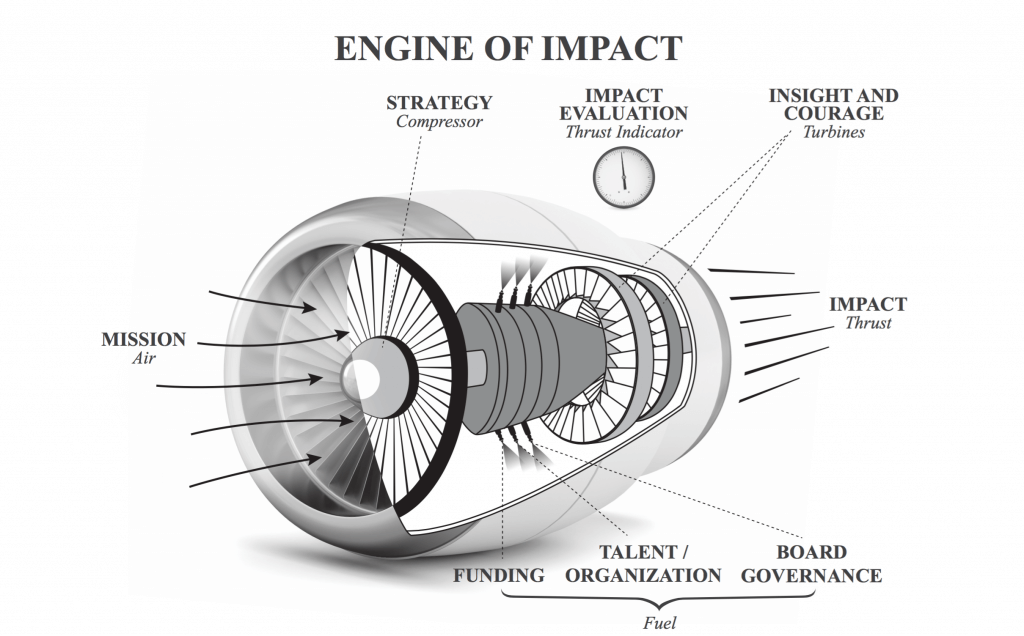Team of Teams: An Emerging Organizational Model
Back in 1980 when Bill Drayton founded Ashoka – the nonprofit organization that helped establish the idea and the practice of social entrepreneurship – he was motivated by a core insight: that individuals with entrepreneurial genius and energy—the kind of people who start new business ventures—could drive social change.
Over the past decade, Ashoka has adopted a new way of organizing its people—a model that is no less revolutionary than the social entrepreneurship model that Drayton pioneered. Ashoka’s transition to this organizational model reflects another critical insight: the real work of change in today’s world happens not through isolated acts of visionary entrepreneurship but within teams of people who each have a critical contribution to make.
Drayton calls the new model “team of teams.” Instead of maintaining a traditional structure in which people work in hierarchies based on a function or a formal business unit, an organization operates as a constellation of teams that come together around specific goals.
At the center of this constellation is a coordinating executive team, but the composition of each project team shifts as needed over time. Teams and team members work together in fluid, constantly changing ways. The model emphasizes decentralized autonomy, meritocracy, and a sense of partnership. (For a brief overview of the model, see this article that Ashoka posted on the Forbes site.)
Other leaders have promoted a similar approach. In 2015, retired US Army General Stanley McChrystal published a book titled Teams of Teams: New Rules of Engagement for a Complex World. McChrystal’s work, which chronicles his effort to reorganize the fight against Al Qaeda in Iraq, shows that a decentralized model can be effective even in a traditionally hierarchical institution like the US military. Drayton, for his part, began speaking about the new organizational structure at Ashoka a few years earlier. In 2013, he published an article called “A Team of Teams World.”
Not coincidentally, Drayton’s pre-Ashoka career included a 10-year stint as a consultant and manager at McKinsey & Company, where the deployment of cross-organizational and cross-functional teams is an essential part of serving clients’ needs.
We, too, worked as consultants at McKinsey during critical stages of our careers, and we saw value of this approach firsthand. But while professional services firms like McKinsey have long organized their staffs into team-based structures, Ashoka and other nonprofits are demonstrating that the team-of-teams model can flourish in a wide variety of complex and challenging environments.
In our research on strategic leadership in the nonprofit sector, we’ve investigated the factors that enable certain nonprofits to become vehicles for achieving extraordinary impact. The team-of-teams model has emerged as one such factor. In the coming years, we believe, it will become standard not just for nonprofits but for other organizations—even for-profit global businesses.
A telling example of the power and adaptability of the model is provided by Pratham, an education nonprofit that operates throughout India. Pratham has adopted a variation on the team of teams model to conduct a survey called the Annual Status of Education Report, or ASER. Conducted annually, ASER gathers data on children’s learning outcomes from households in each of India’s 29 states. Collecting these data is no easy task. But ASER relies on specially created teams of volunteers that coalesce anew every year. These volunteers—30,000 people in all—travel from village to village to assess the reading and arithmetic skills of children across the country. (For more information on Pratham’s use of the model, see our article “Living in a Team-of-Teams World.”)
Drayton, who is now chair of Ashoka, developed his vision for this model in response to changes caused by technology and globalization. Since the Industrial Revolution, Drayton explained to us, efficiency and repetition have been driving forces within most organizations: “People specialized and repeated one skill,” he told us in an interview. “This happens to be very efficient in a world of repetition, but it is a complete failure in the world that we are now in.”
This world is one of change rather than repetition. It calls for new forms of organization that will promote dynamic collaboration. “People must see opportunities and seize them with other people in new teams of teams,” Drayton said.
At Ashoka, implementation of the team of teams approach has involved creating a core leadership team with three to six people. Other elements of this evolving structure, according to Drayton, include “an architects group that focuses on systems” and a “leadership group” that has 90 to 100 members.
The team of teams model provides compelling leadership development opportunities for Ashoka’s staff. “Two-thirds of people’s time is going to be in temporary teams—a partnership team, a goal team,” Drayton noted. “In that world, there are so many more opportunities for people’s career paths than were possible previously.”
Ashoka employees also work in teams that extend beyond their own organization. “As the wall that separates inside and outside goes away,” Drayton said, “We don’t think about teams anymore as [including] solely Ashoka employees.”
As Drayton wrote in his 2013 article, “Value in this world comes not from providing the same thing over and over to a client, but from managing kaleidoscopic change processes that are busily bumping one another. Because one now needs to see and seize ever-changing opportunities, the new organizational model must be a fluid, open team of teams.”
Originally published in Forbes

